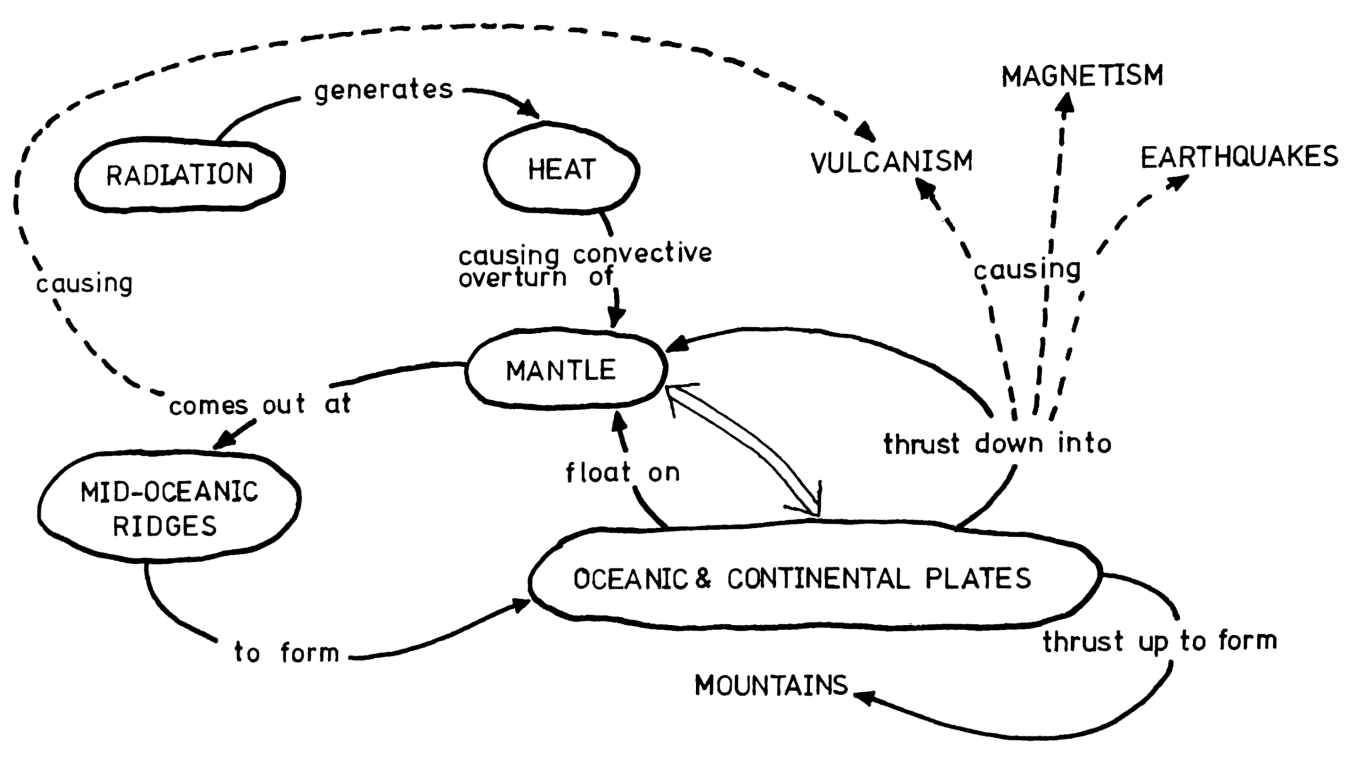002 A world view
1. Introduction
This chapter attempts to identify a part of the structure of a paradigm to which systems thinkers — however they may differ in philosophy and method — unite in making reference when they speak of ‚wholes‘, or ’systems‘. It is undertaken in pursuit of the more effective communication of systems concepts to non-specialists.
The assumption is that it is essential to offer the proselyte an agreed general definition of the language of systems thinking; one that is not only close to English usage, but expressed in a logical pattern of relationships between an economical minimum of entities, all of them centred around the conceptual locus: ’system‘.
(An alternative assumption would be that we should somehow impose a systems jargon in the form of a list of universally recognized terms, each associated with a precise written definition. This alternative assumption is rejected, on the grounds that it is not only unlikely to gain acceptance on the part of systems thinkers, but would act as an effective barrier to communication beyond the community of systems thinkers.)
Something will be said about the idea, implicit in the title of this chapter, that a system of ideas can have some skeletal ’structure‘, and why the integrity of such a structure is essential to the communicability of a system of ideas. Two examples will be given before presenting a picture of the application of the principle to systems concepts. The structures and definitions are rendered as explicitly and as clearly as possible, so as to facilitate critical appraisal.
2. Paradigmatic structures
The contention is that each powerful world-view (i.e. each means of generating understandings of phenomena and ideas) hinges around a small group of nodal concepts. Each nodal concept may be represented by a noun-phrase, and each may be so linked with its fellows as to form a pattern. The need for pattern stems from our tendency to handle ideas as gestalten. Without a pattern it remains palpably difficult to handle or communicate a circus of concepts at a sufficiently high (i.e. macroscopic) level, and the concepts are therefore conceived as a coherent whole only by one who is actively immersed within that particular universe of discourse.
Examples of conceptual systems embodying such patterns (i.e. highly successful conceptual systems) are:
The Copernican Solar System
Plate tectonic geophysical dynamics
Newtonian physics
Freudian psychology
Christian mythology
Marxian dialectical materialism
Each of the above hinges around a restricted number of concepts structured into a pattern that can be grasped in one ‚cognitive act‘. The failure of a communicant when using such a world-view to observe its implicit set of rules will violate our sense of what is ‚permissible‘, just as surely as does a language-statement such as: ‚The old ran across the road‘. The example of plate tectonics is developed in Fig.1, and the example of Christian mythology in Fig.2. In neither case does my treatment of the example pretend to define the paradigm, only· to illustrate the latent sense of structure that a nonChristian, non-specialist in geophysics can externalize when pressed to do so. (With the qualification that some tidying-up took place, the Figures were generated spontaneously in a few minutes.) The criterion for measuring the performance of this level of ’structure‘ is MEMORABILITY, ie. the paradigm will define the status of the familiar English words used to denote its components essentially in terms of the relative position of each within the whole scheme. Here is the core of this argument: relative position within a scheme.
3. Systems concepts
It is my contention that no memorable structure of the sort described in the foregoing section has received tacit acceptance throughout the systems movement. It is therefore necessary to exemplify this approach to the problem (i.e. of rendering systems concepts more ‚thinkable‘ and more communicable) by proposing a static structure which is the product of a selection process.
The structure is given, in schematic form, in Fig.3. This Figure most certainly does seek to define the mutual relationship between what are presented as the relevant entities. A written exposition of the definitions embodied in the schema is given in the following section; however, the definitions themselves are mutual ( cf. Maruyama, op. cit.), and are therefore best expressed in the form of the schema, so that the written notes serve to explain what is set out in Fig.3, and not to define terms.



